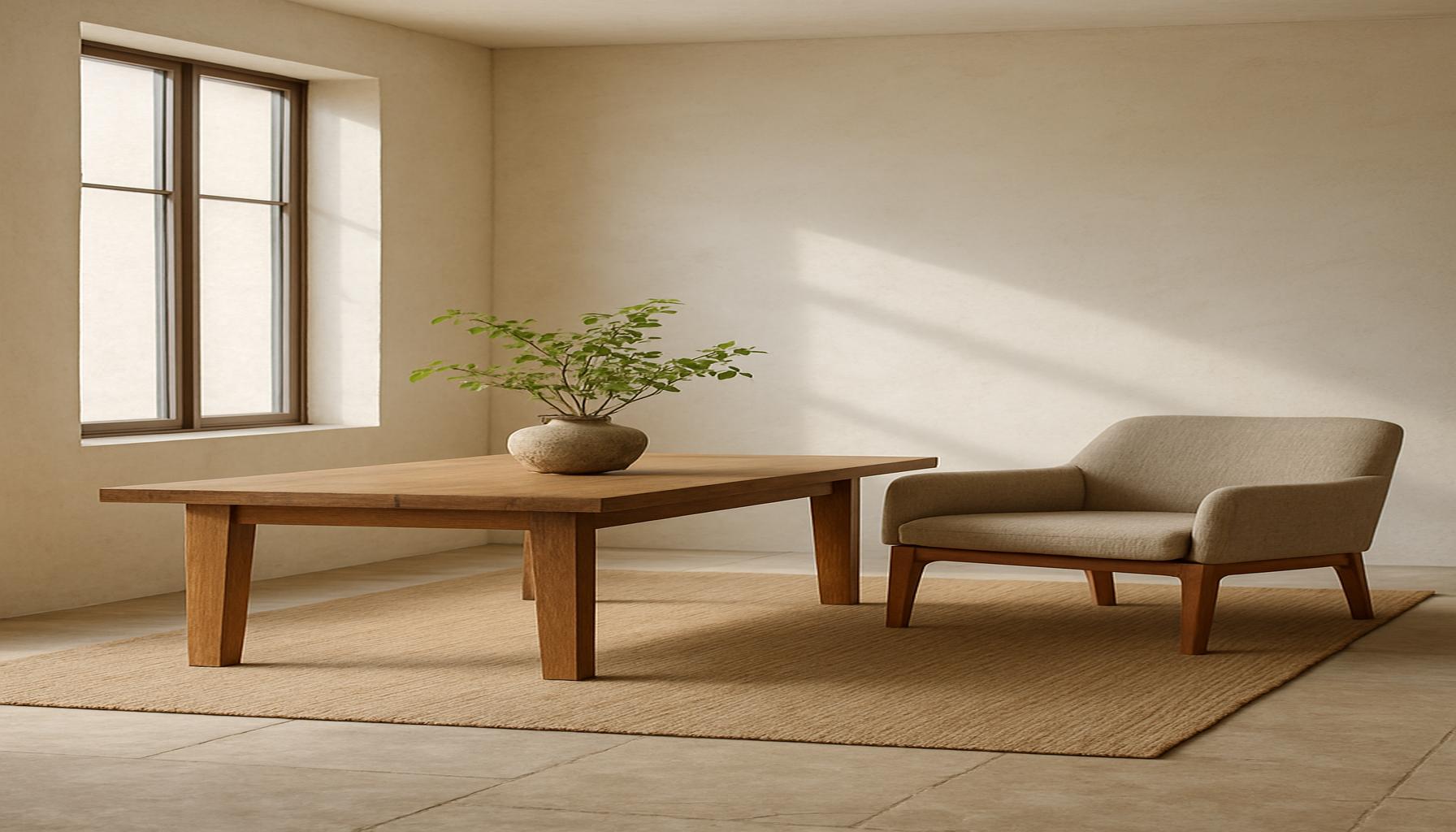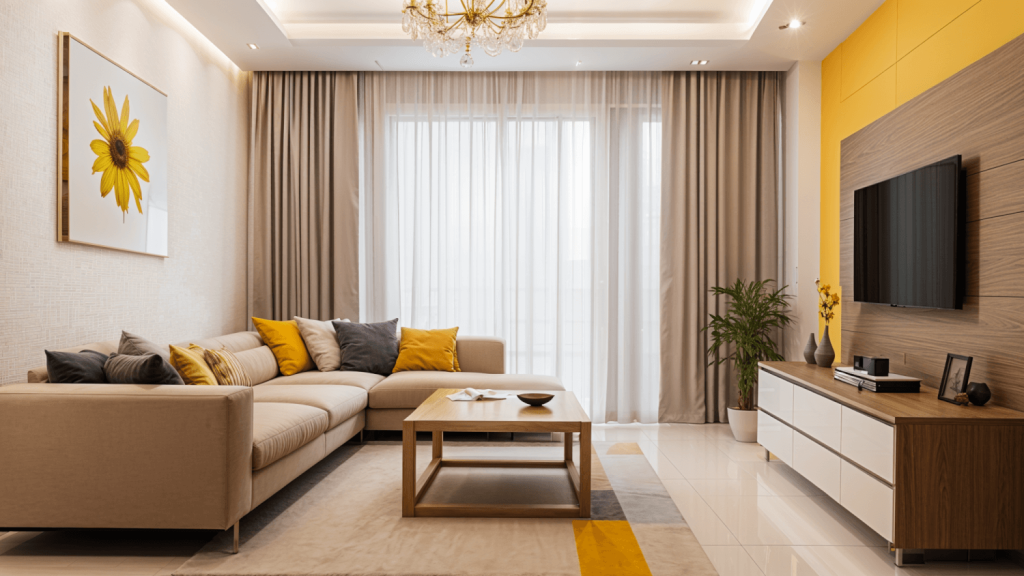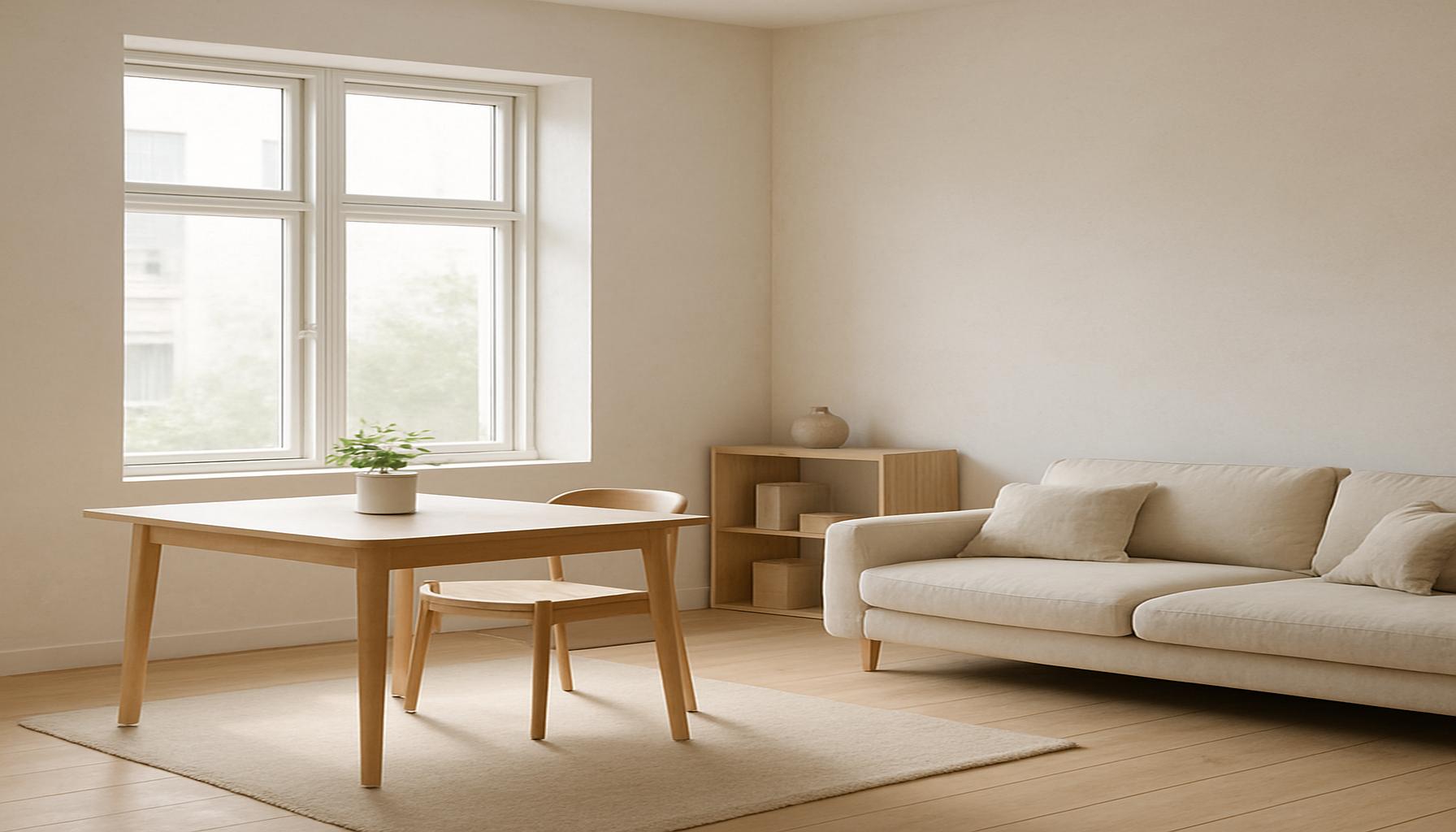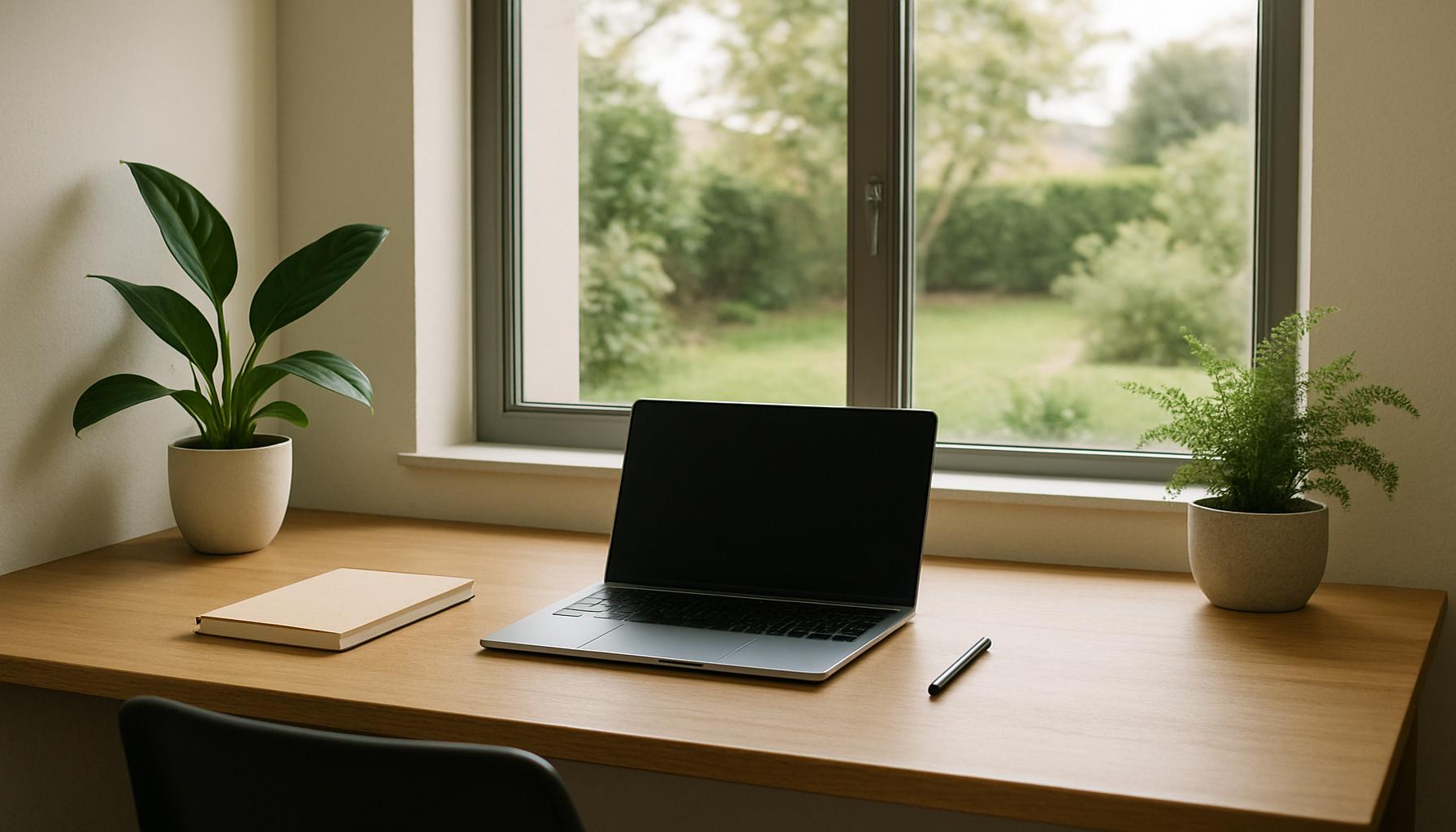Simplicity in Decoration: Creating Attractive Environments with Fewer Items

Embracing Minimalism in Home Design
In a world filled with consumerism, simplicity in decoration invites us to rethink our environments. Instead of crowded spaces, minimalistic design offers a refreshing approach where less truly becomes more. This practice doesn’t only enhance aesthetic appeal; it also promotes mental clarity and tranquility, providing a much-needed respite from the chaos of modern life.
The Power of Fewer Items
Creating attractive environments doesn’t necessarily require an extensive collection of decor items. Here are some compelling benefits of simplicity:
- Enhanced Focus: Fewer distractions lead to greater attention on important features. For instance, in a minimalist living room, a single piece of artwork can command the space, drawing eyes to its details without competing with several other items.
- Effortless Maintenance: Less clutter means easier cleaning and upkeep. A streamlined environment not only looks fresh but saves time, allowing homeowners to enjoy their space instead of constantly tidying up.
- Timeless Aesthetics: Minimalist designs often transcend trends, remaining elegant through time. Styles like mid-century modern furniture have proven that simplicity can remain fashionable for decades.
Many successful interior designs illustrate this trend. Think of the Scandinavian style, which emphasizes functionality and natural materials, often highlighted by minimalist furniture that fuses beauty with purpose. Alternatively, consider the modern farmhouse aesthetic, characterized by open spaces, large functional kitchens, and understated charm that breeds comfort while avoiding excessive ornamentation.
Exploring Minimalist Strategies
To achieve a simple yet attractive environment, start with intentional selections. Focus on:
- Quality over Quantity: Invest in fewer, high-quality pieces that resonate with your style. Artisans and local craftspeople often provide unique items that not only serve a purpose but also tell a story.
- Natural Light: Use large windows to create airy, inviting spaces. For example, open-concept designs that integrate outdoor light can make a small apartment feel larger and more connected to nature.
- Neutral Palettes: Opt for calming colors to enhance the feeling of openness. Soft whites, grays, and beiges can create a serene atmosphere, inviting relaxation and creativity to flourish.
Your living space can transform into a sanctuary that promotes peace and inspiration when you embrace these principles. As you engage with minimalism, consider decluttering not just your physical environment but also your lifestyle, prioritizing experiences over possessions. This radical shift can illuminate the path toward a more mindful existence, urging you to discover what truly matters. For those eager to delve deeper into this design philosophy, countless resources and communities celebrate simplicity, serving as invaluable guides on your journey.

DISCOVER MORE: Click here to learn how to simplify your space
Understanding the Essence of Minimalist Design
At its core, simplicity in decoration is about understanding the essence of space and purpose. By adopting a minimalist approach, one can create a nurturing environment that emphasizes comfort, functionality, and tranquility. This philosophy encourages individuals to make deliberate choices regarding their belongings, promoting a sense of order and calm that can greatly enhance daily living.
Key Principles of Minimalist Decoration
When embarking on the journey of minimalism, it’s essential to embrace several guiding principles that can influence your decorating decisions. These principles not only assist in curating a beautiful space but also foster a harmonious living experience:
- Intentionality: Every item should serve a purpose or evoke joy. Before introducing a new decor piece into your home, ask yourself whether it satisfies a need or contributes positively to your environment. This practice helps to cultivate a mindful selection process, turning each room into a thoughtful showcase rather than a mere collection of possessions.
- Functional Design: Aim for furniture and decor that fulfill multiple roles. For example, a well-designed coffee table can serve as both a display surface and a storage unit for books or games. This dual functionality maximizes space while minimizing clutter.
- Natural Elements: Incorporating elements of nature—such as plants, wood, and stone—adds warmth and a soothing aesthetic to minimalistic designs. Biophilic design, which focuses on integrating nature into interiors, has been shown to improve mood and increase productivity.
Incorporating these principles into your home offers numerous advantages. For one, you create a visually cohesive environment where every element works harmoniously. Additionally, the open spaces result in enhanced lighting and airflow, imparting a sense of freedom and relaxation that can significantly affect your well-being.
Decoding the Role of Clutter
One of the most profound realizations in minimalist decor is recognizing the detrimental effects of clutter. Excess items not only detract from aesthetic appeal but also exacerbate feelings of stress and overwhelm. Studies indicate that individuals living in tidy, organized environments experience lower anxiety levels and improved focus. With intentional decluttering, individuals can free themselves from the psychological burden of overconsumption and foster a nurturing retreat.
In practical terms, embarking on a decluttering journey can be both liberating and transformative. Start small—focus on a single room or area and systematically evaluate each item’s significance. Create keep, donate, and discard categories to help streamline the process. The outcome is often a renewed appreciation for what remains—both in terms of beauty and functionality.
As you build your minimalist haven, remember that simplicity doesn’t imply a barren space. Rather, it’s an opportunity to curate a collection of meaningful, high-impact pieces that reflect your personal style while adhering to the tenets of simplicity in decoration. In doing so, you pave the way towards a more sophisticated, tranquil, and ultimately fulfilling living space.
| Advantage | Details |
|---|---|
| Enhanced Clarity | A minimalist approach showcases individual elements and significantly improves the overall visual appeal of a space. |
| Emotional Calm | Simplicity fosters tranquility, creating environments that reduce stress and promote relaxation. |
Exploring the concept of simplicity in decoration reveals profound benefits for both functionality and aesthetics. Clarity in design reflects a conscious choice to emphasize the beauty of space without unnecessary clutter. Imagine a room where each item serves both purpose and beauty—every piece artfully selected enhances the atmosphere. This attention to detail not only attracts the eye but invites individuals to focus on the essence of their surroundings.Moreover, the emotional impact of minimalist environments cannot be overstated. Spaces that embrace simplicity often promote a sense of calm. The notion of “fewer items” is not merely about less; rather, it’s about creating a setting that offers respite from daily chaos. This psychological aspect encourages deeper contemplation and provides a platform for creativity to flourish. When individuals encounter carefully curated spaces, they are often inspired to live with intention, further appreciating the benefits of a simplified lifestyle.
DIVE DEEPER: Click here to learn more
Transforming Spaces with Thoughtful Color Choices
An often overlooked aspect of simplicity in decoration is the powerful influence of color. The right color palette can significantly affect your space, creating a sense of tranquility, vibrancy, or coziness with minimal effort. Selecting a thoughtful palette not only reduces visual clutter but also enhances the connection between the furnishings and the overall aesthetic. Many interior designers emphasize the use of neutral tones, such as whites, grays, and browns, paired with bold accent colors to draw attention without overwhelming the senses.
The Power of Neutrals
Neutral colors such as soft whites or gentle grays allow for versatility in design, presenting a blank canvas upon which to build your decor. For example, a neutral living room accented with a singular piece of art or a colorful couch can become a focal point while maintaining a serene environment. Moreover, neutrals reflect light beautifully, which can visually enlarge a space, making it feel more open and inviting, vital traits in any minimalist home.
Accent and Contrast for Depth
However, utilizing bold colors as accents can greatly enhance the beauty of a minimalist space. Think of a kitchen clad in crisp white cabinetry, paired with deep navy blue bar stools. This combination not only adds visual interest but also avoids the clutter associated with excessive items. Incorporating elements like vibrant cushions or striking wall art allows for personal expression while adhering to a minimalist theme. By carefully choosing where to introduce these pops of color, homeowners can ensure that their spaces remain both dynamic and uncluttered.
Lighting: A Key Ingredient in Minimalism
Another crucial element in achieving simplicity in decoration is the intentional use of lighting. Natural light is often heralded as essential in minimalist design, as it creates an airy atmosphere and enhances the perception of space. Large windows, skylights, or even strategically placed mirrors can increase natural light, leading to more expansive and inviting spaces.
Artificial lighting also plays a pivotal role; selecting fixtures that are not only stylish but also serve functional purposes creates a blend of beauty and utility. For instance, pendant lights over dining areas or soft wall sconces in the living room can add an ambient glow without contributing to visual clutter. Integrated technologies, such as dimmers or smart lighting solutions, can further adapt the ambiance according to different times of day or activities, embodying the essence of simplicity in decoration.
Textiles: A Subtle Touch of Comfort
The careful selection of textiles can also enhance the minimalist approach. Soft rugs, delicate drapes, and comfortable linens can introduce a tactile dimension to your environment without overwhelming the senses. It’s about finding that perfect balance; for example, a single textured throw on a sleek sofa can add warmth and depth, serving both aesthetic and functional needs.
Moreover, when selecting these textiles, leaning toward quality rather than quantity becomes paramount. Investing in a few well-crafted pieces not only elevates the overall design but also reinforces the principles of minimalism, focusing on authenticity and longevity over fleeting trends.
Ultimately, embracing simplicity in decoration isn’t just about survival against clutter—it’s a lifestyle choice. By incorporating deliberate color choices, thoughtful lighting, and curated textiles, you can craft spaces that resonate with warmth and comfort, embodying the art of living beautifully with less.
DON’T MISS OUT: Click here to enhance your productivity
Conclusion: The Art of Minimalism in Decoration
In the quest for attractiveness and functionality, simplicity in decoration emerges as a powerful philosophy that champions the idea that less can indeed be more. By focusing on essential elements, homeowners can create spaces that are not only visually appealing but also resonate with a sense of peace and mindfulness. The interplay of thoughtfully chosen colors, strategic lighting, and quality textiles allows for the cultivation of environments that welcome and soothe the spirit.
Furthermore, embracing a minimalist approach doesn’t have to mean sacrificing personality or warmth. Instead, it invites individuals to curate their spaces with intentionality, showcasing unique pieces that tell a story without the distraction of excess. This artful simplicity encourages deeper connections to our surroundings and promotes a lifestyle centered around sustainability and awareness.
As the trend toward minimalism continues to gain momentum, it’s essential to recognize the enduring impact of our choices on both aesthetic representation and personal well-being. Whether you are redesigning your home or simply refreshing a single room, remember that the principles of thoughtful decoration—such as color harmony, effective use of light, and the selection of luxurious materials—can transform your environment into a serene sanctuary.
As you embark on your journey towards a simpler, more beautiful living space, let the mantra of “less is more” guide you. By making intentional designs and selections, you not only enhance your home but also enrich your daily experience, proving that true beauty lies in the elegance of simplicity.


